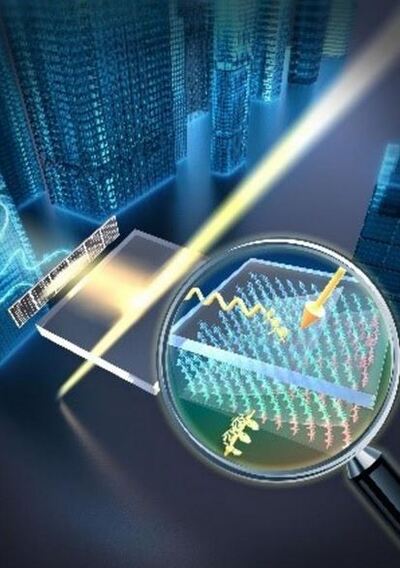How clear windows can harvest energy

A research team led by Nanjing University has created a transparent, colourless and unidirectional solar concentrator that can be directly coated onto standard window glass.
A key feature of this substance is that it doesn’t compromise clarity.
For this reason, it compares favourably to conventional luminescent or scattering-based concentrators, which often suffer from visual distortion, low efficiency and poor scalability.
The team’s diffractive-type solar concentrator (CUSC) selectively guides sunlight towards the edge of the window where photovoltaic cells are installed. It maintains a high average visible transmittance (64.2%) and colour rendering index (91.3), enabling clean energy generation without altering the appearance of the window.
To achieve this result, the team used cholesteric liquid crystal (CLC) multilayers with submicron lateral periodicities.

“By engineering the structure of cholesteric liquid crystal films, we create a system that selectively diffracts circularly polarised light, guiding it into the glass waveguide at steep angles,” said Dr Dewei Zhang, co-first author of the team’s study. “This allows up to 38.1% of incident green light energy to be collected at the edge.”
Experiments showed that a prototype with a 1-inch diameter could directly power a 10 mW fan under sunlight. Additionally, the team’s modelling indicated that a typical 2 m-wide CUSC window could concentrate sunlight by 50 times, significantly reducing the number of photovoltaic cells required by up to 75%. The system supports integration with high-performance PV cells such as gallium arsenide for enhanced power conversion.
The multilayered CLC films are fabricated via photoalignment and polymerisation techniques and are scalable via roll-to-roll manufacturing. Remaining stable under long-term exposure, the design can be retrofitted onto existing windows for sustainable urban upgrades.
“The CUSC design is a step forward in integrating solar technology into the built environment without sacrificing aesthetics,” said Professor Wei Hu, a co-author of the study. “It represents a practical and scalable strategy for carbon reduction and energy self-sufficiency.”
Future work will focus on enhancing broadband efficiency, polarisation control, and adapting the technology for agricultural greenhouses and transparent solar displays. Ultimately, the researchers envision turning passive glass into active, energy-generating surfaces worldwide.
The team’s peer-reviewed findings appear in the journal PhotoniX, where they can be read at DOI: 10.1186/s43074-025-00178-3.
Tackling energy insecurity in remote communities
Researchers from Flinders and Macquarie Universities have presented the benefits of community-led...
Paper-thin LEDs that are kinder to the eye
A new, experimental LED is nearly as thin as paper and emits a warm, sun-like glow.
Three key players in the Cheaper Home Batteries Program
In this in-depth review, solar installer Mark Wright examines three batteries approved for use in...




